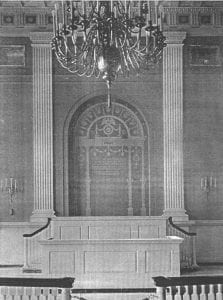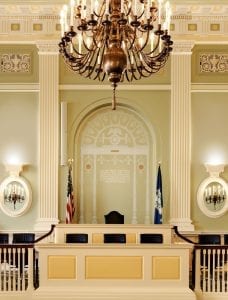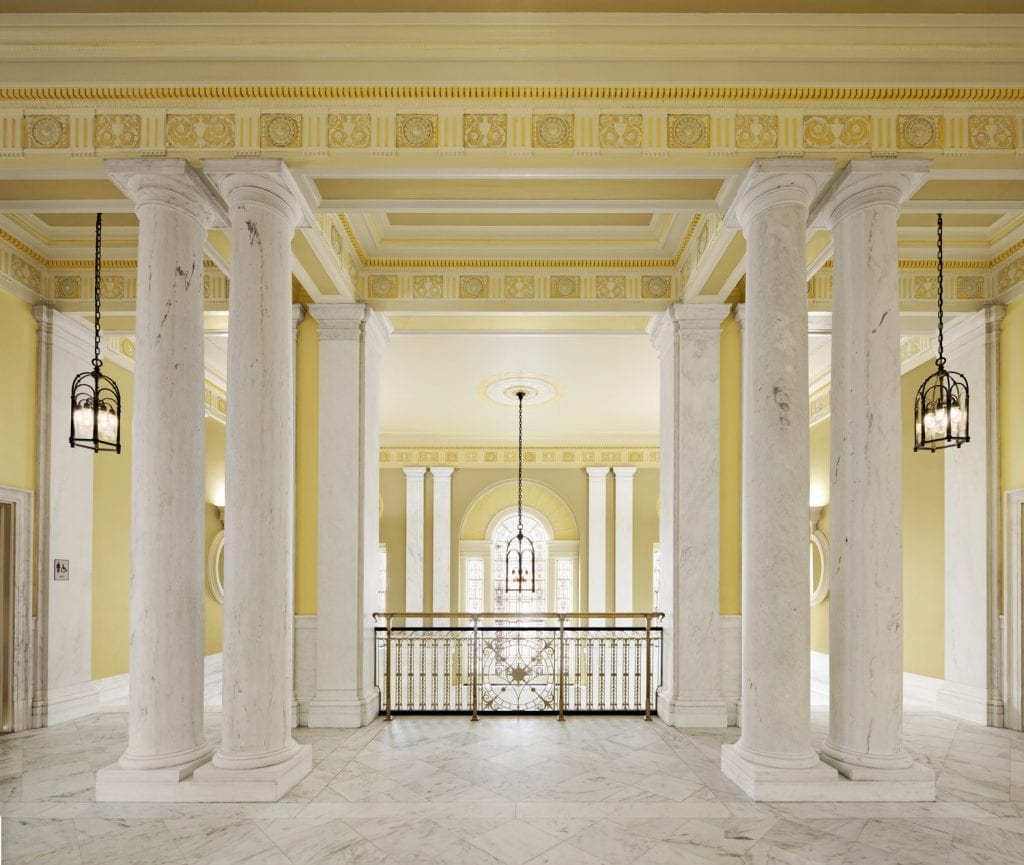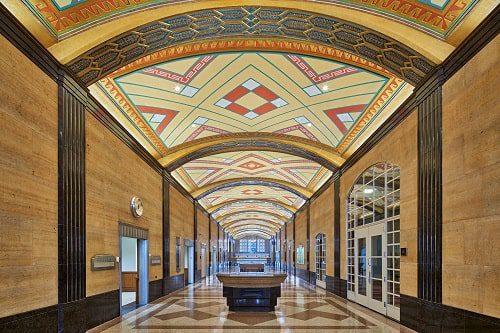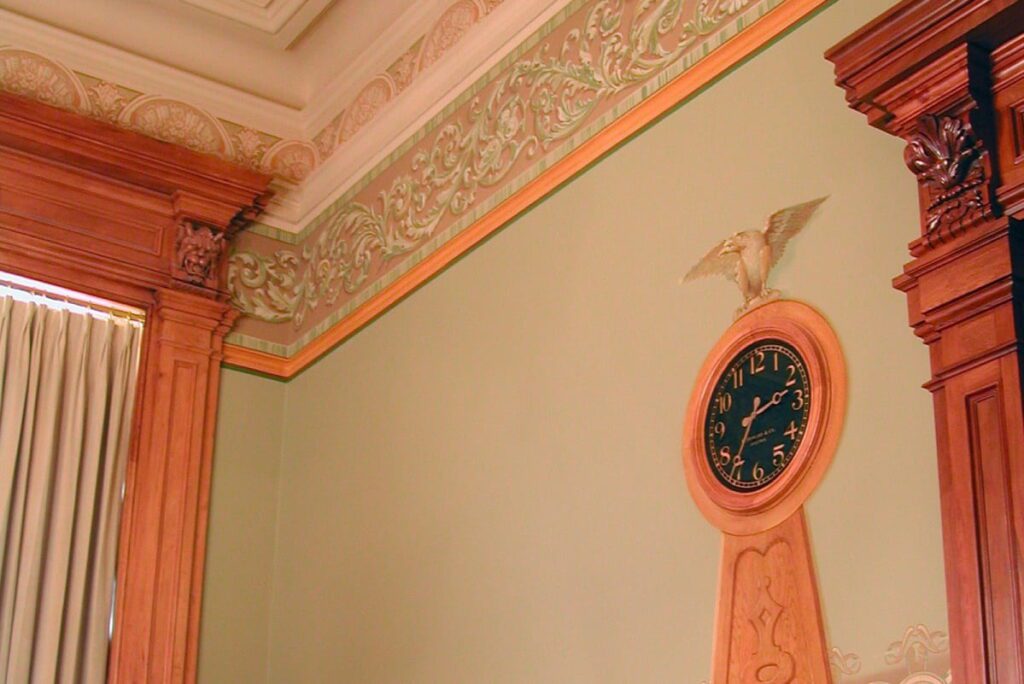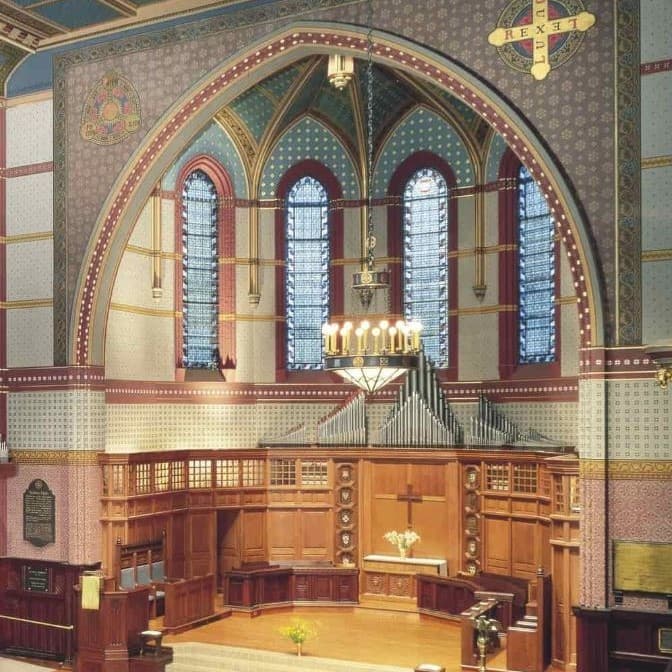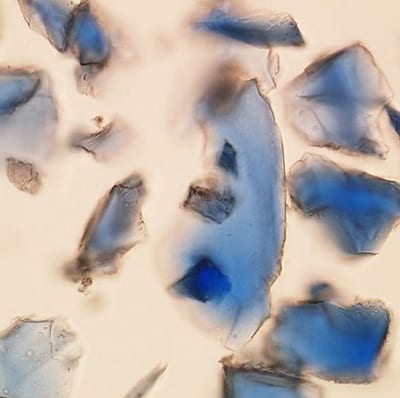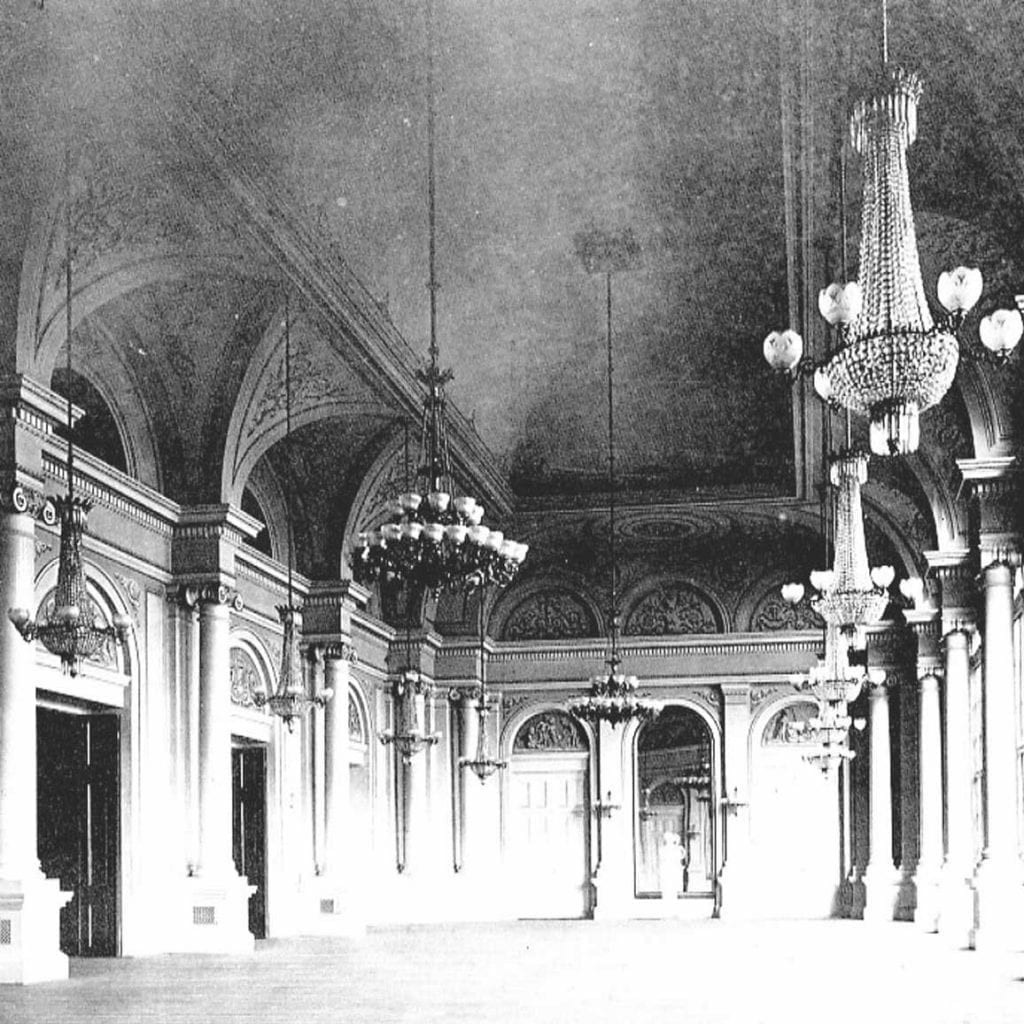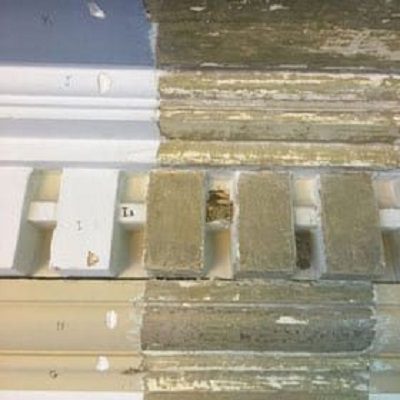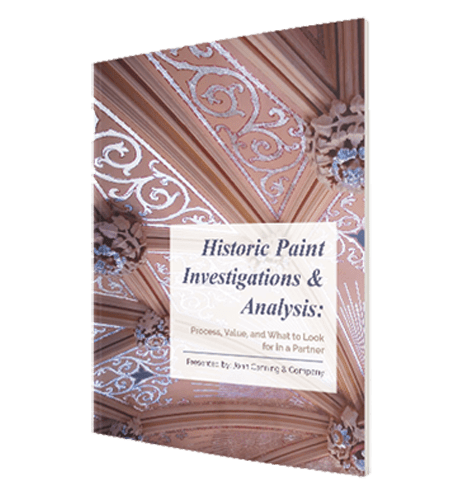A historic finishes investigation, also known as historic paint analysis, is a multi-step process to help uncover the original colors and decorative finishes of a building or structure.
Ideally, this process involves a number of processes, including:
- Conducting archival research
- On-site investigation, along with sampling
- Scientific laboratory analysis
- And a report with interpretation.
A historic paint investigation takes a look beneath the top layer of paint that allows one to see what may not be visible on the outer surface. Evidence of change including alterations, repairs, and layers of the evolution of the structure’s history can be discovered by a trained eye.
While the value of conducting a historic finishes investigation is clear, many owners of historic structures (and architects working on them) wonder: When is it appropriate to conduct a historic paint analysis?
Below are some of the indications and common reasons to conduct an investigation.
1. You want to look into the past and uncover the original finishes and the artistic details hidden below the surface.
A paint analysis allows you to take a good look at the history of the paint layers and get down to the original historic paint while providing the information that can identify the type of paint, the color as well as the color palette that was used. If you have a reason to believe that the existing paint or finish is not the original, then an investigation can help you know for certain.
2. You are looking to help date the paint, building, or structure.
Between the archival research and scientific analysis involved, a historic paint analysis can help to remove uncertainty around a structure’s history.The end results in the report and interpretation of a paint analysis gives you the information you need to date not only the paint, but often also the building structure itself.
3. You want some additional guidance in the design renovations and redecorations.
A paint analysis helps determine the time period of the original paint, which can be extremely helpful when it comes to conducting renovations and other redecorating. A paint analysis may, for example, reveal a previously-unknown color palette, which can then be used to drive decisions during any design-development phase.
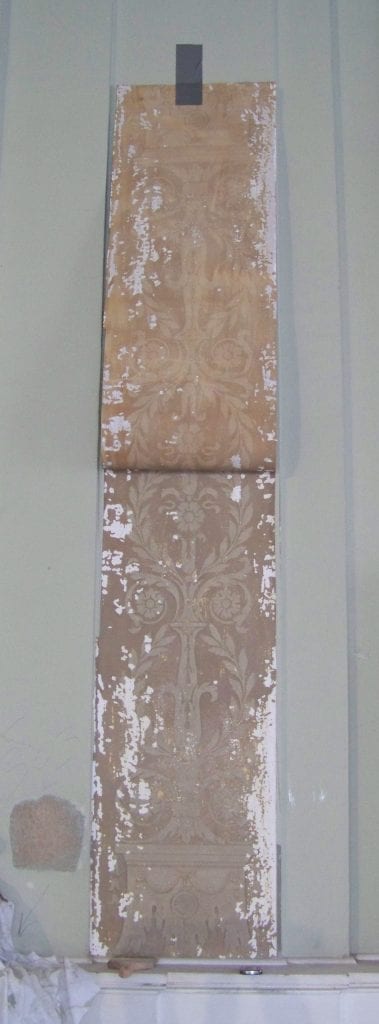
Revealed decoration beneath canvas.
4. You are unsure whether or not the paint warrants being preserved/restored.
When in doubt, a paint analysis will provide you with the information you need to make an informed decision of whether you should preserve, restore, or incorporate something new in the area in question. Knowing the history, paint composition, color palette, styles, and underlying material helps in taking that next step.
5. You are planning work on a historic building in a region or location where other owners/architects have uncovered hidden or lost paintwork in the past.
Having the details that a paint analysis report provides is a must when working in a known historic area. Knowing what you are dealing with early on allows you to plan accordingly in any work that will need to be done, and prevents any loss of historic elements that might exist.
For example, in coastal areas where humidity may be higher, there is a likelihood that a pigmented limewash or distemper paint may have been utilized to allow for vapor permeability.
6. Structural work is planned and you do not want to risk damaging hidden decorative elements
Structural work (for example, the installation of new HVAC equipment) has the potential to damage any decorative elements in the vicinity of the work, including decorative paint and plasterwork. With this in mind, it is better to be safe than sorry when work has the potential to destroy, ruin, or damage historic decorative elements. Taking the extra step and getting a paint analysis done will take the worry out of potentially damaging work and allow you to make adjustments if necessary to help preserve historical decorative elements.
7. You have discovered hidden or covered-over artwork elsewhere on the property.
If you have discovered some hidden or covered-over artwork in one location on a property, there is a good chance that there are other areas that may have artwork as well. Bringing in a professional to do a paint analysis will help you determine if that actually is the case. Architectural materials conservators use their expertise to know where to look, conduct exposures, and sample paint from diverse areas of an interior, all while carefully chronicling the exact locations for future work.
8. You have stumbled upon primary sources or other documentation alluding to, describing, or depicting various decorative elements not currently visible.
Finding any type of documentation—whether it be pictures or articles—that give any indication to decorative elements regarding a building or structure is actually part of the first step of a paint investigation. Once you have that information, you definitely want to take the next step and conduct a full paint analysis to see the true history and find out what treasures might be hidden.
9. To diagnose the cause of a paint failure.
If the property in question contains paint that has begun to fail (crack, peel, etc.), a paint analysis can help to determine the cause. A paint analysis can include determining which paint binder was used, which can often explain the causes of a paint failure—as well as guide appropriate preservation or conservation treatments. Failures often develop from applying incompatible paints, such as a latex paint over a historic distemper paint.
10. You have discovered primary sources alluding to historic decorative elements but do not know where they are.
Architectural materials conservators, when conducting a paint analysis, use their expertise to know where to look, conduct exposures, and sample paint—taking the guesswork out of the equation so you don’t have to worry where to look.
Don’t try to do it alone.
While it may sometimes be tempting to search for historic decorative elements on your own or collect your own samples, when these processes are not properly handled, they can lead to irreversible (or costly to reverse) damage. An improper investigation can destroy the only remaining historic evidence there may be. That’s why it is always better to be safe than sorry. If you have any reason to believe that your structure my house unseen decorative elements, contacting a qualified conservator can determine the answer.
At John Canning & Co., we have over 45 years of expertise and experience when it comes to analyzing and interpreting the context of the complete structure and its historic fabric. Our interpretations are a result of a high level of understanding in how colors work together as well as how light, shadow and other components play a critical role in the results of the paint analysis, as well as a full understanding of the architectural styles and period interiors.


